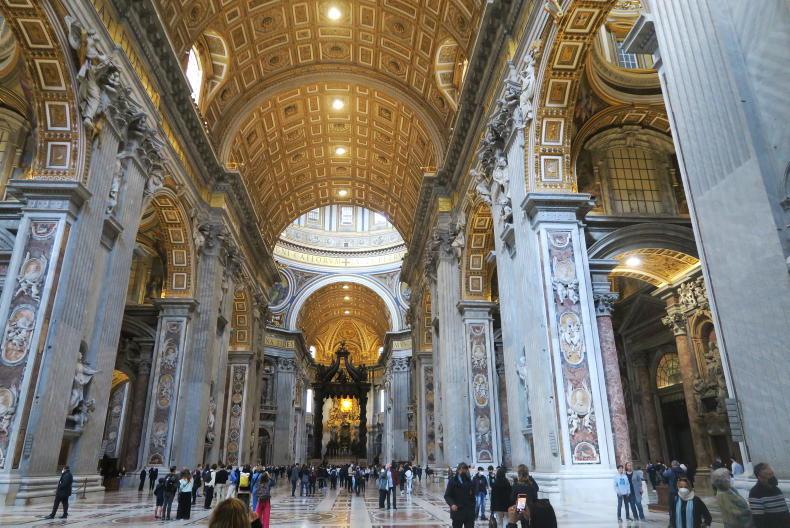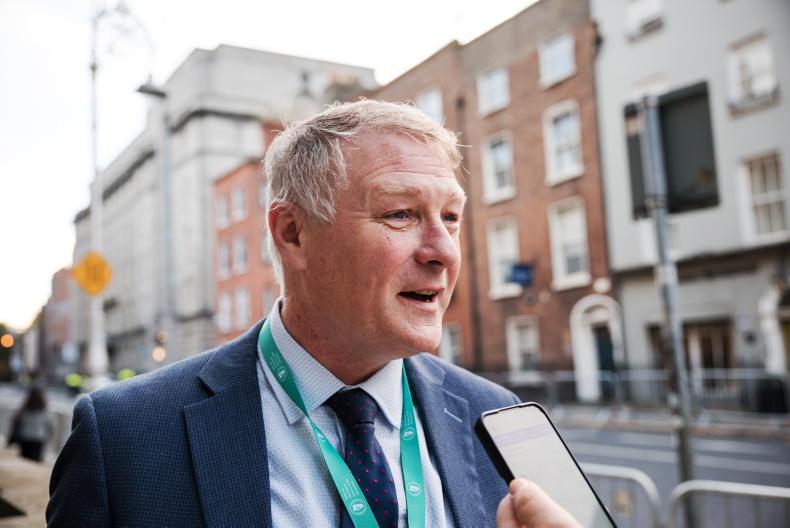All roads lead to Rome,” Alian de Lille has told us, but my wife Aurore and I were taking no chances. We arranged with our hotel to have a driver collect us at Fiumicino airport and drop us right to the doorstep, and the affable and highly entertaining Maurizio had us at the imposing doors of the Ara di Marte Suites on the Via di Campo Marzio within half an hour.
The key to making the most of a short city break is to base oneself as centrally as possible, and do your homework beforehand as to the lay of the land; how best to get from A to B, whether a detour to C might be worthwhile, how the buses and the metro works etc. As it happens, Rome has a very limited underground railway system – attempts to expand the existing three lines have always been thwarted by fresh archaeological discoveries. In any case it is an eminently walkable city, where streets laid out during the Renaissance wend their way around the remnants of classical antiquity, and the architecture of later centuries blends seamlessly into the whole.

Il Gesu, perhaps the most beautiful church in Rome. \ Liam Clancy
Stroll in any direction down central Rome’s winding streets and you will soon find yourself blinking in the sun in one of the historic piazzas, gazing in awe at an imposing Renaissance palace, or being drawn into the cool sanctum of a Baroque church. The city’s churches – over 900 of them in all - are the glory of Rome, from the monumental, many-layered Pantheon to the echoing vastness of St Peter’s Basilica to the ornate magnificence of Il Gesù, perhaps the most beautiful of them all.
The Eternal City
We dined on our first night in the delightful Il Bacaro on the Via degli Spagnoli, a romantic little restaurant with a total of seven tables squeezed into its atmospheric interior. There was time for a walk afterwards on the Via Condotti, a famous street lined by shops bearing some of the greatest names in fashion – Valentino, Dior, Armani, Gucci and a score of others.
At the top of the Via Condotti is the lovely Piazza di Spagna and the celebrated Spanish Steps. The Spanish Steps are considered a national monument, and sitting on them is forbidden under strict new decorum laws, which seem somewhat at odds with the free and easy Italian character. Mind you, of the small crowd who were still gathered at the Piazza di Spagna during our late night stroll, most of them were sitting on the steps.

Inside the Colosseum. \ Liam Clancy
By nine o’clock next morning we were exploring the streets again, pleasantly surprised at how quiet they were. Our first port of call was the Pantheon, built by the Emperor Hadrian circa 126 AD as a temple to all the gods, and rededicated as a Catholic church in 609 AD. One of the best-preserved of all ancient Roman buildings, it is a beautiful, awe-inspiring structure. Almost 2000 years after its construction, it still features the world’s largest unreinforced concrete dome.

The Forum, viewed from Palatine Hill. \ Liam Clancy
The ticket office at the Colosseum has not been manned since the beginning of COVID. We purchased our tickets online, downloaded them onto Aurore’s phone and presented ourselves at the entrance. There we were told we would have to walk back to the tourist office to have our tickets validated and printed. This was beyond the powers of the lady in the tourist office on the Via Dei Fori Imperiali, but she helpfully directed us to another tourist office about a mile away at the Il Vittoriano monument. With tired feet and fraying tempers, we tramped through spitting rain to our new destination, where the lady behind the counter good-naturedly chided us for being late, amended our entry time, printed our tickets on two flimsy sheets of A4, and sent us on our way back to the Colosseum. This sort of thing happens all the time when you’re travelling in Italy; you just have to treat it as part of the experience.
Anyway, the mighty Colosseum more than justified all this rigmarole. There were numerous tour groups shuffling around after guides who talked them through the history and design of the amphitheatre in a dozen languages. My own knowledge of classical antiquity is sketchy, but I have seen Gladiator several times, and was able to show Aurore exactly where Russell Crowe fought Titus the Gaul while other key figures from history such as Joaquin Phoenix and Connie Nielsen looked on.

Aurore throwing a coin over her left shoulder into the Trevi Fountain; a ritual said to guarantee a return trip to Rome. \ Liam Clancy
Admission to the Colosseum also covers entry to the Forum, a fascinating conglomeration of ruined temples, triumphal arches, medieval architecture and incongruous baroque churches. The peaceful 16th century Farnese Gardens on the Palatine Hill provide an ideal vantage point to take in the Forum in its entirety.
St Peter’s Basilica
We awoke to a morning of brilliant spring sunshine next day and made our way to the Vatican, taking in the beautiful Piazza Navona on the way. The Piazza San Pietro, the vast plaza in front of St Peter’s Basilica, was the first place in Rome that we encountered queues, but they moved along at a smarter pace than expected, and we were inside the Basilica within 20 minutes. The sheer jaw-dropping scale of St Peter’s – 615 feet long, 448 feet from the marble floor to the top of Michelangelo’s spectacular cupola – is impossible to convey in words. I have a strange and incurable addiction to bounding up interminable spiral staircases in historic buildings, as my long-suffering spouse can attest, and so I insisted that we negotiate the hundreds of steps that snake their way to the top of the dome. There we found all the glorious palaces and gardens of the Vatican City spread out before us. We had intended to visit the Vatican museums and the Sistine Chapel, but booking admission online proved something of a palaver, and I was afraid that someone would make us walk to the Colosseum to have our tickets printed.

The interior of St Peter's Basilica. \ Liam Clancy
Instead we rambled down the west bank of the Tiber to seek a bit of tranquillity in the Orto Botanico, the picturesque botanical gardens perched on the flank of Janiculum Hill. The Orto Botanico is home to over 7000 species of plants, a green oasis full of flitting parakeets and groups of laughing schoolchildren. For reasons that were not made clear, it was also full of large model dinosaurs, accompanied by little signs bearing the stern admonition: DO NOT RIDE ANIMALS. There are few finer views of Rome, with its shining river and its multitude of domed churches, than that from the top of the gardens. Someone had evidently decided that the one thing missing was a fibreglass allosaurus.

The view from the cupolo of St Peter's Basilica. \ Liam Clancy
A month would not be long enough to savour all the delights of the Eternal City, but with a bit of forward planning you at least give yourself a good flavour of it on a city break of two or three days. Visiting Rome is undoubtedly expensive, but then, so is living in Abbeyleix. One of the nice things about travelling from Ireland is that again and again you find yourself paying for meals and attractions in the shadow of places like the Colosseum and St Peter’s Basilica and saying, “Jaysus, that could have been worse.”
Both Ryanair and Aer Lingus operate daily flights to Rome. Ryanair flies to Ciampino, about 9 miles from the city, and Aer Lingus to Fiumicino, which is slightly further out. We stayed at the Ara di Marte Suites on the centrally located Via di Campo Marzio. Prices from €217 per night.
Read more
The hunt: pounding hooves and flying mud
Great Irish Paintings: ‘The Biggest Walls in the Counthry was in it’ by Snaffles
All roads lead to Rome,” Alian de Lille has told us, but my wife Aurore and I were taking no chances. We arranged with our hotel to have a driver collect us at Fiumicino airport and drop us right to the doorstep, and the affable and highly entertaining Maurizio had us at the imposing doors of the Ara di Marte Suites on the Via di Campo Marzio within half an hour.
The key to making the most of a short city break is to base oneself as centrally as possible, and do your homework beforehand as to the lay of the land; how best to get from A to B, whether a detour to C might be worthwhile, how the buses and the metro works etc. As it happens, Rome has a very limited underground railway system – attempts to expand the existing three lines have always been thwarted by fresh archaeological discoveries. In any case it is an eminently walkable city, where streets laid out during the Renaissance wend their way around the remnants of classical antiquity, and the architecture of later centuries blends seamlessly into the whole.

Il Gesu, perhaps the most beautiful church in Rome. \ Liam Clancy
Stroll in any direction down central Rome’s winding streets and you will soon find yourself blinking in the sun in one of the historic piazzas, gazing in awe at an imposing Renaissance palace, or being drawn into the cool sanctum of a Baroque church. The city’s churches – over 900 of them in all - are the glory of Rome, from the monumental, many-layered Pantheon to the echoing vastness of St Peter’s Basilica to the ornate magnificence of Il Gesù, perhaps the most beautiful of them all.
The Eternal City
We dined on our first night in the delightful Il Bacaro on the Via degli Spagnoli, a romantic little restaurant with a total of seven tables squeezed into its atmospheric interior. There was time for a walk afterwards on the Via Condotti, a famous street lined by shops bearing some of the greatest names in fashion – Valentino, Dior, Armani, Gucci and a score of others.
At the top of the Via Condotti is the lovely Piazza di Spagna and the celebrated Spanish Steps. The Spanish Steps are considered a national monument, and sitting on them is forbidden under strict new decorum laws, which seem somewhat at odds with the free and easy Italian character. Mind you, of the small crowd who were still gathered at the Piazza di Spagna during our late night stroll, most of them were sitting on the steps.

Inside the Colosseum. \ Liam Clancy
By nine o’clock next morning we were exploring the streets again, pleasantly surprised at how quiet they were. Our first port of call was the Pantheon, built by the Emperor Hadrian circa 126 AD as a temple to all the gods, and rededicated as a Catholic church in 609 AD. One of the best-preserved of all ancient Roman buildings, it is a beautiful, awe-inspiring structure. Almost 2000 years after its construction, it still features the world’s largest unreinforced concrete dome.

The Forum, viewed from Palatine Hill. \ Liam Clancy
The ticket office at the Colosseum has not been manned since the beginning of COVID. We purchased our tickets online, downloaded them onto Aurore’s phone and presented ourselves at the entrance. There we were told we would have to walk back to the tourist office to have our tickets validated and printed. This was beyond the powers of the lady in the tourist office on the Via Dei Fori Imperiali, but she helpfully directed us to another tourist office about a mile away at the Il Vittoriano monument. With tired feet and fraying tempers, we tramped through spitting rain to our new destination, where the lady behind the counter good-naturedly chided us for being late, amended our entry time, printed our tickets on two flimsy sheets of A4, and sent us on our way back to the Colosseum. This sort of thing happens all the time when you’re travelling in Italy; you just have to treat it as part of the experience.
Anyway, the mighty Colosseum more than justified all this rigmarole. There were numerous tour groups shuffling around after guides who talked them through the history and design of the amphitheatre in a dozen languages. My own knowledge of classical antiquity is sketchy, but I have seen Gladiator several times, and was able to show Aurore exactly where Russell Crowe fought Titus the Gaul while other key figures from history such as Joaquin Phoenix and Connie Nielsen looked on.

Aurore throwing a coin over her left shoulder into the Trevi Fountain; a ritual said to guarantee a return trip to Rome. \ Liam Clancy
Admission to the Colosseum also covers entry to the Forum, a fascinating conglomeration of ruined temples, triumphal arches, medieval architecture and incongruous baroque churches. The peaceful 16th century Farnese Gardens on the Palatine Hill provide an ideal vantage point to take in the Forum in its entirety.
St Peter’s Basilica
We awoke to a morning of brilliant spring sunshine next day and made our way to the Vatican, taking in the beautiful Piazza Navona on the way. The Piazza San Pietro, the vast plaza in front of St Peter’s Basilica, was the first place in Rome that we encountered queues, but they moved along at a smarter pace than expected, and we were inside the Basilica within 20 minutes. The sheer jaw-dropping scale of St Peter’s – 615 feet long, 448 feet from the marble floor to the top of Michelangelo’s spectacular cupola – is impossible to convey in words. I have a strange and incurable addiction to bounding up interminable spiral staircases in historic buildings, as my long-suffering spouse can attest, and so I insisted that we negotiate the hundreds of steps that snake their way to the top of the dome. There we found all the glorious palaces and gardens of the Vatican City spread out before us. We had intended to visit the Vatican museums and the Sistine Chapel, but booking admission online proved something of a palaver, and I was afraid that someone would make us walk to the Colosseum to have our tickets printed.

The interior of St Peter's Basilica. \ Liam Clancy
Instead we rambled down the west bank of the Tiber to seek a bit of tranquillity in the Orto Botanico, the picturesque botanical gardens perched on the flank of Janiculum Hill. The Orto Botanico is home to over 7000 species of plants, a green oasis full of flitting parakeets and groups of laughing schoolchildren. For reasons that were not made clear, it was also full of large model dinosaurs, accompanied by little signs bearing the stern admonition: DO NOT RIDE ANIMALS. There are few finer views of Rome, with its shining river and its multitude of domed churches, than that from the top of the gardens. Someone had evidently decided that the one thing missing was a fibreglass allosaurus.

The view from the cupolo of St Peter's Basilica. \ Liam Clancy
A month would not be long enough to savour all the delights of the Eternal City, but with a bit of forward planning you at least give yourself a good flavour of it on a city break of two or three days. Visiting Rome is undoubtedly expensive, but then, so is living in Abbeyleix. One of the nice things about travelling from Ireland is that again and again you find yourself paying for meals and attractions in the shadow of places like the Colosseum and St Peter’s Basilica and saying, “Jaysus, that could have been worse.”
Both Ryanair and Aer Lingus operate daily flights to Rome. Ryanair flies to Ciampino, about 9 miles from the city, and Aer Lingus to Fiumicino, which is slightly further out. We stayed at the Ara di Marte Suites on the centrally located Via di Campo Marzio. Prices from €217 per night.
Read more
The hunt: pounding hooves and flying mud
Great Irish Paintings: ‘The Biggest Walls in the Counthry was in it’ by Snaffles















SHARING OPTIONS